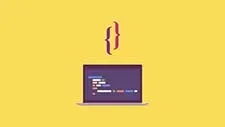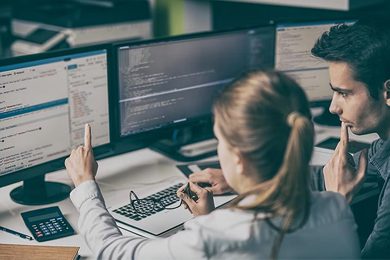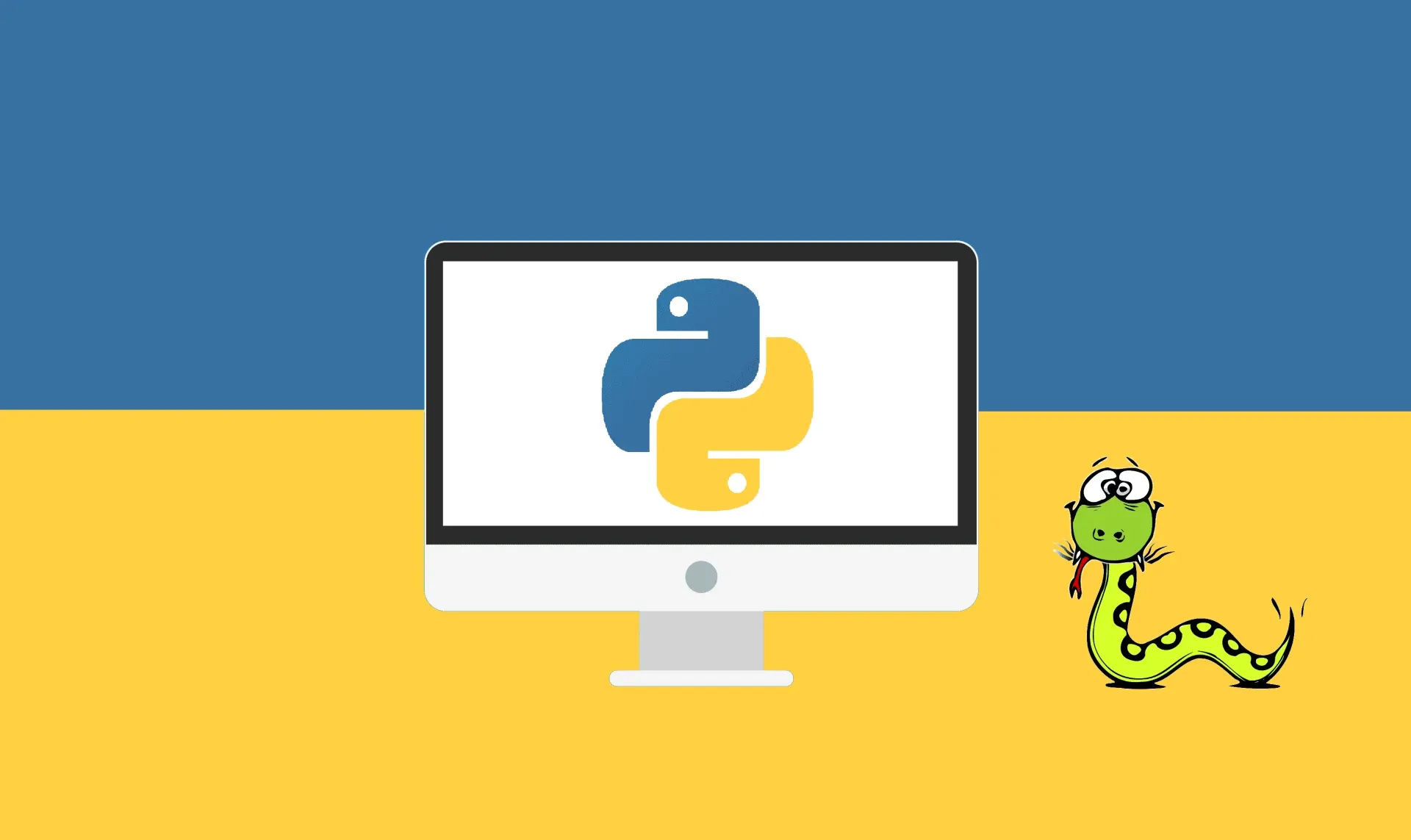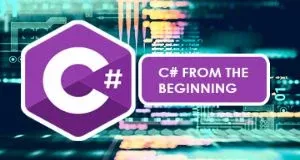This plan includes
- Limited free courses access
- Play & Pause Course Videos
- Video Recorded Lectures
- Learn on Mobile/PC/Tablet
- Quizzes and Real Projects
- Lifetime Course Certificate
- Email & Chat Support
What you'll learn?
- Use programming fundamentals to build a calculator.
- Use advanced Python concepts to code a RPG.
- Find additional packages to expand the functionality of Python.
- Code an app for web scraping.
- Create a NoSQL database using PyMongo.
- Create web apps using Web.py.
- Django web server setup.
- Data visualization using matplotlib and pandas.
- GUI programming using PyQt.
- Code a speech recognition app.
Course Overview
If you want to get started programming in Python, you are going to LOVE this course! This course is designed to fully immerse you in the Python language, so it is great for both beginners and veteran programmers! Learn Python as Nick takes you through the basics of programming, advanced Python concepts, coding a calculator, essential modules, creating a "Final Fantasy-esque" RPG battle script, web scraping, PyMongo, WebPy development, Django web framework, GUI programming, data visualization, machine learning, and much more!
We are grateful for the great feedback we have received!
"This course it great. Easy to follow and the examples show how powerful python can be for the beginner all the way to the advanced. Even if the RPG may not be your cup of tea it shows you the power of classes, for loops, and others!"
"Good course even for non-programmers too."
"It's really well explained, clear. Not too slow, not too fast."
"Very thorough, quick pace. I'm learning A TON! Thank you :)"
"Good explanation, nice and easy to understand. Great audio and video quality. I have been trying to get into Python programming for some time; still a long way to go, but so far so good!"
The following topics are covered in this course:
-
Programming Basics
-
Python Fundamentals
-
JavaScript Object Notation (JSON)
-
Web Scraping
-
PyMongo (MongoDB)
-
Web Development
-
Django Web Framework
-
Graphical User Interface (GUI) Programming (PyQt)
-
Data Visualization
-
Machine Learning
This course is fully subtitled in English!
Thank you for taking the time to read this and we hope to see you in the course!
Pre-requisites
- Access to a computer.
- Internet access to download the necessary software (free).
Target Audience
- Students who would like to learn how to code.
- Students who would like to start a career as a Python developer.
Curriculum 146 Lectures 18:07:23
Section 1 : Introduction to Programming with Python
- Lecture 2 :
- Mac/Linux installation
- Lecture 3 :
- Windows setup
- Lecture 4 :
- Interpreted vs. compiled programming languages
- Lecture 5 :
- Creating and running our first Python script
- Lecture 6 :
- Choosing an integrated development environment (IDE)
Section 2 : Programming Basics
- Lecture 1 :
- Basic types - numbers
- Lecture 2 :
- Basic types - strings
- Lecture 3 :
- Basic string manipulation
- Lecture 4 :
- Basic types - Boolean operators
- Lecture 5 :
- Lists (arrays)
- Lecture 6 :
- Dictionaries
- Lecture 7 :
- Variables
- Lecture 8 :
- Built-in functions
- Lecture 9 :
- User-defined functions
- Lecture 10 :
- Adding arguments to a function
- Lecture 11 :
- Default arguments
- Lecture 12 :
- Keyword arguments
- Lecture 13 :
- Infinite arguments
- Lecture 14 :
- Return values from functions
- Lecture 15 :
- If, elif, else statements
- Lecture 16 :
- For/while loops
- Lecture 17 :
- Importing libraries into a script
- Lecture 18 :
- Project #1 - Building a calculator
Section 3 : Advanced Python Concepts
- Lecture 1 :
- PEP guidelines
- Lecture 2 :
- Breaking out of while loops
- Lecture 3 :
- Continuing while loops
- Lecture 4 :
- Classes & objects
- Lecture 5 :
- Instance variables
- Lecture 6 :
- Class & instance variables
- Lecture 7 :
- How to add comments to your code
- Lecture 8 :
- Importing modules from relative paths
Section 4 : Project #2 - RPG Battle Script
- Lecture 1 :
- RPG setup
- Lecture 2 :
- Creating our character
- Lecture 3 :
- Additional utility classes
- Lecture 4 :
- Enemy instantiation
- Lecture 5 :
- Using magic
- Lecture 6 :
- Turning our magic into a class
- Lecture 7 :
- Healing our player
- Lecture 8 :
- Adding items
- Lecture 9 :
- Implementing different item types
- Lecture 10 :
- Better HP view
- Lecture 11 :
- Adding members to our party
- Lecture 12 :
- Working HP bars
- Lecture 13 :
- White space in HP & MP
- Lecture 14 :
- Enemy HP bar
- Lecture 15 :
- Multiple enemies pt.1
- Lecture 16 :
- Multiple enemies pt.2
- Lecture 17 :
- Enemy artificial intelligence
Section 5 : Additional Python Resources
- Lecture 1 :
- Reading and writing files in Python
- Lecture 2 :
- JavaScript Object Notation (JSON)
- Lecture 3 :
- Using Virtualenv to create a virtual environment
- Lecture 4 :
- The Python Package Index (PyPI)
Section 6 : Essential Modules - Requests
- Lecture 1 :
- Introduction to Requests
- Lecture 2 :
- HTTP GET variables
- Lecture 3 :
- Pillow the image processing library (PIL)
- Lecture 4 :
- Posting data
- Lecture 5 :
- Posting JSON
- Lecture 6 :
- Headers
Section 7 : Project #3 - Web Scraper
- Lecture 1 :
- Beautiful Soup
- Lecture 2 :
- Parsing our soup
- Lecture 3 :
- Directional navigation
- Lecture 4 :
- Image scraper
- Lecture 5 :
- Improvements to our web scraper
Section 8 : Project #4 - Getting Started with PyMongo
- Lecture 1 :
- Introduction and setup
- Lecture 2 :
- Inserting documents
- Lecture 3 :
- Bulk inserts
- Lecture 4 :
- Counting documents
- Lecture 5 :
- Multiple find conditions
- Lecture 6 :
- Datetime and keywords
- Lecture 7 :
- Indexes
Section 9 : Project #5 - Web Development Project Using Web.py
- Lecture 1 :
- Introduction and simple example
- Lecture 2 :
- HTML templates
- Lecture 3 :
- Building a MVC
- Lecture 4 :
- Importing static files
- Lecture 5 :
- Setting up a register form
- Lecture 6 :
- Posting data to web.py
- Lecture 7 :
- Creating users
- Lecture 8 :
- Hashing passwords
- Lecture 9 :
- Login logic
- Lecture 10 :
- Web.py sessions
- Lecture 11 :
- Logout functionality
- Lecture 12 :
- Posting microblogs
- Lecture 13 :
- Retrieving post objects
- Lecture 14 :
- User settings and updating Mongo
- Lecture 15 :
- Relative datetimes
- Lecture 16 :
- Making our post dates pretty
- Lecture 17 :
- Adding post comments
- Lecture 18 :
- Image uploads and avatars
Section 10 : Project #6 - Django Web Framework
- Lecture 1 :
- Django project setup
- Lecture 2 :
- Creating our blog app
- Lecture 3 :
- Setting up the admin site
- Lecture 4 :
- URLs and views
- Lecture 5 :
- HTML templates
- Lecture 6 :
- Dynamic template data
- Lecture 7 :
- Single post page
- Lecture 8 :
- Implementing Bootstrap
- Lecture 9 :
- Static files
- Lecture 10 :
- Template inheritance
- Lecture 11 :
- Post images, multi-level templates, and more
Section 11 : Project #7 - GUI Programming with PyQt
- Lecture 1 :
- Installation and 1st program
- Lecture 2 :
- Declarative interfaces
- Lecture 3 :
- Event handling in QML
- Lecture 4 :
- Qt layouts, buttons, and labels
- Lecture 5 :
- QLineEdit
- Lecture 6 :
- QPushButton clicked
- Lecture 7 :
- Setting QLabels text
- Lecture 8 :
- Calculator project setup
- Lecture 9 :
- QGridLayout
- Lecture 10 :
- Programming buttons
- Lecture 11 :
- Button event handling
- Lecture 12 :
- Evaluating queries
- Lecture 13 :
- Finishing touches
Section 12 : Project #8 - PyQt Web Browser
- Lecture 1 :
- QTabWidget
- Lecture 2 :
- Interacting with tabs
- Lecture 3 :
- QWebEngine implementation
- Lecture 4 :
- Switching tabs
- Lecture 5 :
- Setting up our web address bar
- Lecture 6 :
- Updating tab text
- Lecture 7 :
- Updating tab icons
- Lecture 8 :
- Back, forward, and reload functionality
- Lecture 9 :
- Updating the address bar
- Lecture 10 :
- Style sheets
- Lecture 11 :
- Qt key shortcuts
- Lecture 12 :
- QtSplitter and section wrap up
Section 13 : Project #9 - Data Visualization
- Lecture 1 :
- Installing matplotlib
- Lecture 2 :
- World population graph
- Lecture 3 :
- Adding labels and custom line color
- Lecture 4 :
- Multiple lines and line styling
- Lecture 5 :
- Configuring the graph
- Lecture 6 :
- Let's make pie (charts)
- Lecture 7 :
- Letting Pandas make data simpler
- Lecture 8 :
- Using Panda's data for pie charts
- Lecture 9 :
- Bar charts pt.1
- Lecture 10 :
- Bar charts pt.2
- Lecture 11 :
- Bar charts pt.3
- Lecture 12 :
- Custom legend
Section 14 : Project #10 - Speech Recognition & AI
- Lecture 1 :
- Introduction to machine learning
- Lecture 2 :
- Feedback sounds with PyAudio
- Lecture 3 :
- Recognizing our speech
- Lecture 4 :
- Making our program speak back
- Lecture 5 :
- Parsing speech
- Lecture 6 :
- Making our AI useful
- Lecture 7 :
- Creating the illusion of consciousness
- Lecture 8 :
- Speaking from it's own brain
- Lecture 9 :
- Getting more answers
Our learners work at
Frequently Asked Questions
How do i access the course after purchase?
It's simple. When you sign up, you'll immediately have unlimited viewing of thousands of expert courses, paths to guide your learning, tools to measure your skills and hands-on resources like exercise files. There’s no limit on what you can learn and you can cancel at any time.Are these video based online self-learning courses?
Yes. All of the courses comes with online video based lectures created by certified instructors. Instructors have crafted these courses with a blend of high quality interactive videos, lectures, quizzes & real world projects to give you an indepth knowledge about the topic.Can i play & pause the course as per my convenience?
Yes absolutely & thats one of the advantage of self-paced courses. You can anytime pause or resume the course & come back & forth from one lecture to another lecture, play the videos mulitple times & so on.How do i contact the instructor for any doubts or questions?
Most of these courses have general questions & answers already covered within the course lectures. However, if you need any further help from the instructor, you can use the inbuilt Chat with Instructor option to send a message to an instructor & they will reply you within 24 hours. You can ask as many questions as you want.Do i need a pc to access the course or can i do it on mobile & tablet as well?
Brilliant question? Isn't it? You can access the courses on any device like PC, Mobile, Tablet & even on a smart tv. For mobile & a tablet you can download the Learnfly android or an iOS app. If mobile app is not available in your country, you can access the course directly by visting our website, its fully mobile friendly.Do i get any certificate for the courses?
Yes. Once you complete any course on our platform along with provided assessments by the instructor, you will be eligble to get certificate of course completion.
For how long can i access my course on the platform?
You require an active subscription to access courses on our platform. If your subscription is active, you can access any course on our platform with no restrictions.Is there any free trial?
Currently, we do not offer any free trial.Can i cancel anytime?
Yes, you can cancel your subscription at any time. Your subscription will auto-renew until you cancel, but why would you want to?
Instructor

409076 Course Views
6 Courses



 Tech & IT
Tech & IT
 Business
Business
 Coding & Developer
Coding & Developer
 Finance & Accounting
Finance & Accounting
 Academics
Academics
 Office Applications
Office Applications
 Art & Design
Art & Design
 Marketing
Marketing
 Health & Wellness
Health & Wellness
 Sounds & Music
Sounds & Music
 Lifestyle
Lifestyle
 Photography
Photography






















